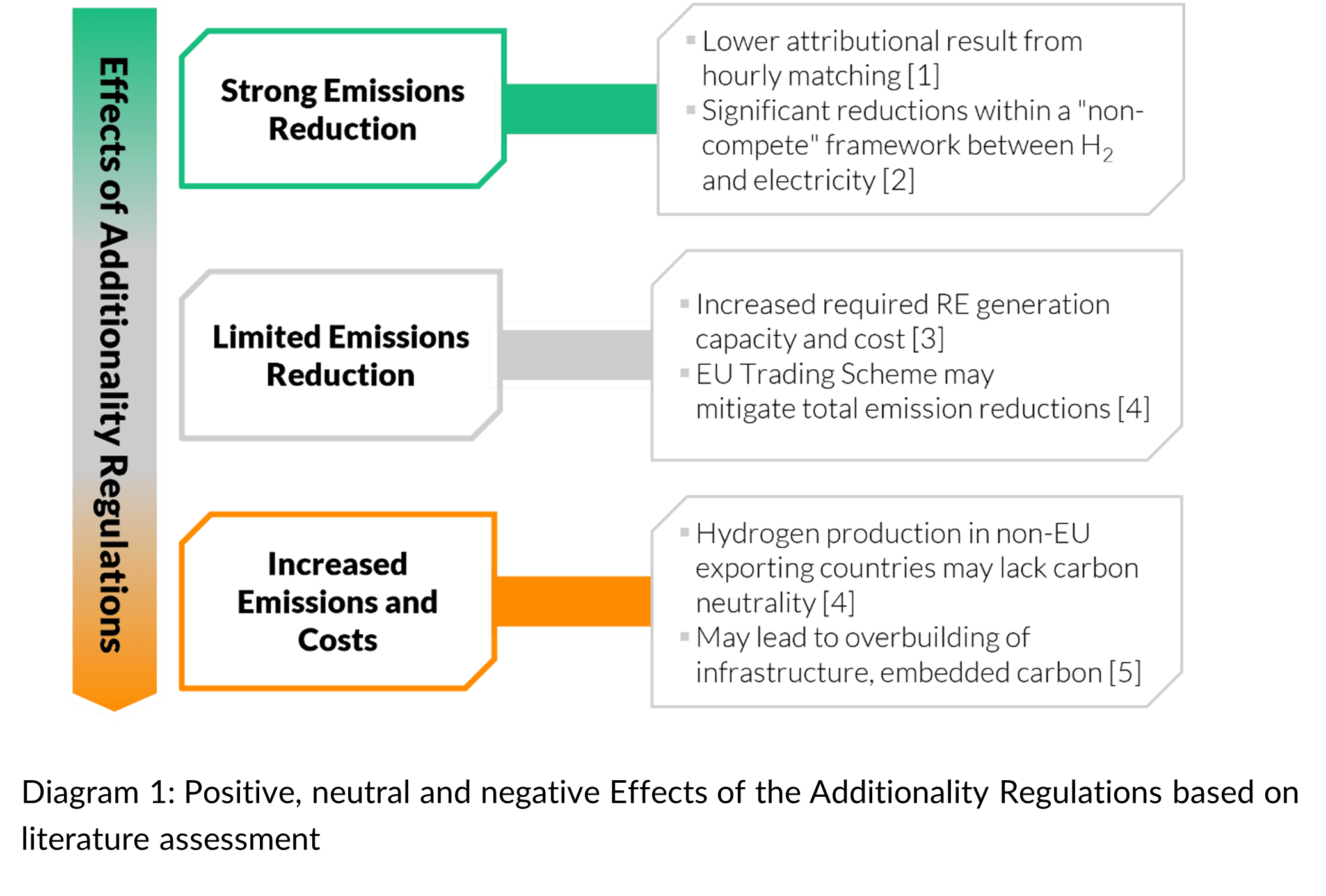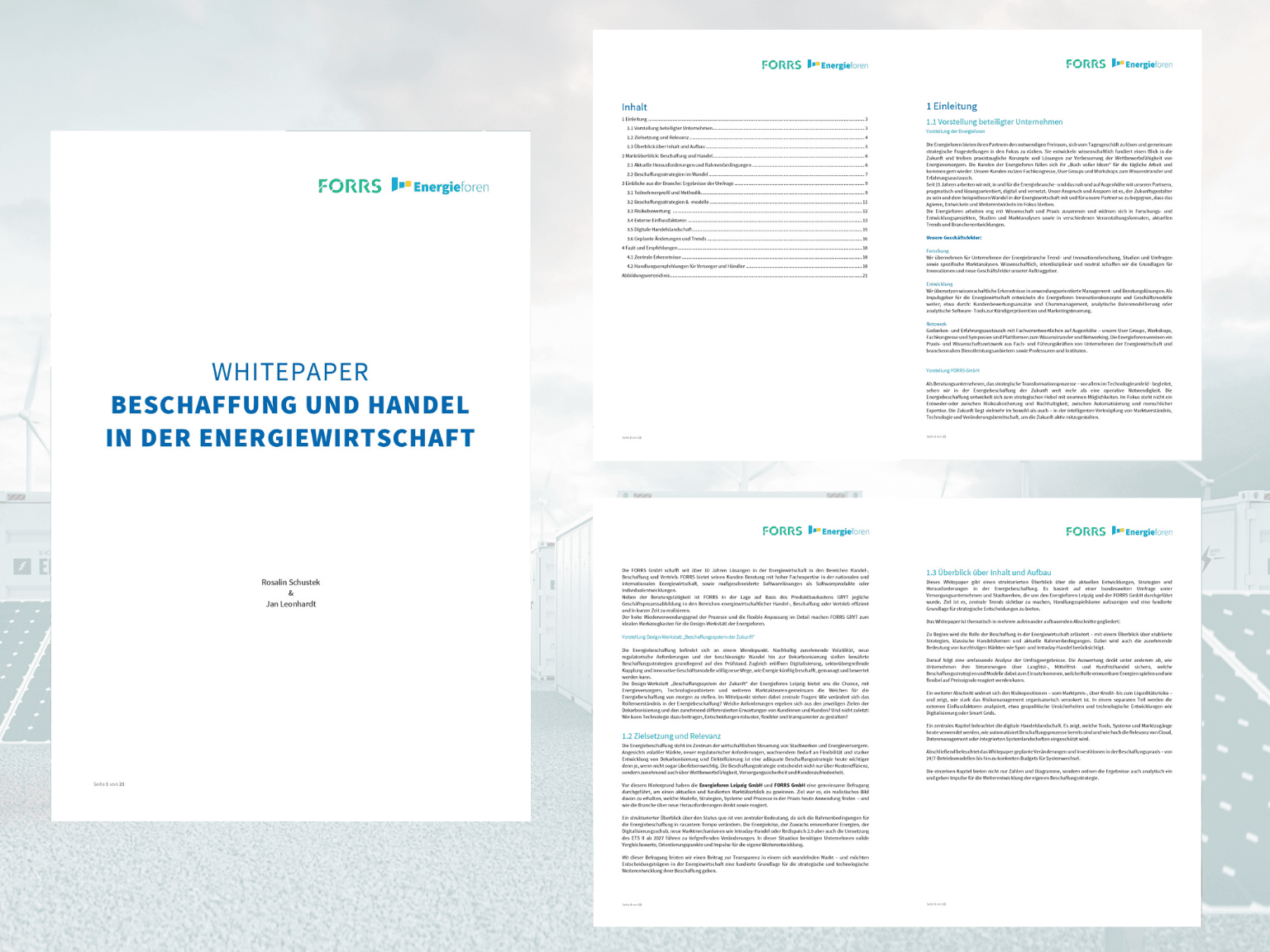07.12.2023 / 13:30
Navigating Additionality in Hydrogen Production
Energy Markets

Navigating Additionality in Hydrogen Production
We take a deep dive into the Additionality Principle, as outlined in the delegated act adopted by the European Commission on 20 June 2023. The Act provides a clear definition of under which conditions hydrogen, hydrogen-based fuels, or other energy carriers can be considered as renewable fuels of non-biological origin (RFNBO).
The Additionality requirement
The purpose of additionality is to guarantee that growing hydrogen production coincides with the development of new renewable energy sources. Accordingly, it is mandated that hydrogen manufacturers either sign power purchase agreements (PPAs) with new, unsupported renewable electricity generation capacity or self-produce the required renewable electricity. Alternatively the electrolyser can be connected to a network where the average proportion of renewable electricity exceeds 90 %, or the emissions intensity is below 18 gCO2eq/MJ (approx. 56 CO2e/kWh).
Temporal and spatial criteria
These criteria ensure that hydrogen is produced when and where renewable electricity is available. The temporal criteria are complied with if one of the following conditions is met:
- Until 2030: RFNBO is produced during the same month.
- From 2030: RFNBO is produced during the same one-hour-period.
- Always complied if the hydrogen production occurs within the one-hour period when the clearing price for power resulting from the day-ahead market is lower than or equal to EUR 20/MWh, or lower than 0.36 times the EU Emissions Trading System. The spatial criteria are met if the electrolyser facility is located in: The same bidding zone. The same interconnected bidding zone and the electricity price is equal to or higher than in the bidding zone where the RFNBO is produced. An offshore bidding zone that is interconnected with the bidding zone where the electrolyser is located.
The spatial criteria are met if the electrolyser facility is located in:
- The same bidding zone.
- The same interconnected bidding zone and the electricity price is equal to or higher than in the bidding zone where the RFNBO is produced.
- An offshore bidding zone that is interconnected with the bidding zone where the electrolyser is located.

These criteria aim to avoid that the demand for renewable electricity used for hydrogen production incentivises more fossil electricity generation, as this would have negative consequences for greenhouse gas emissions, fossil fuel demand, and related gas and electricity prices.
Intention of Additionality
The additionality principle is crucial to ensuring that the increasing demand for renewable electricity in hydrogen production does not compete with the electricity needed for the direct electrification of other processes across the economy. This principle aims to promote the generation of renewable hydrogen, incentivizing an increase in the volume of renewable energy available to the grid. Consequently, hydrogen production supports decarbonization and complements electrification efforts, all while avoiding undue pressure on power generation.
Critique from the literature
The exploration of additionality in hydrogen production has ignited a compelling debate within academia and industry, bringing to the forefront a spectrum of perspectives and critiques. Diagram 1 depicts the outcomes of several studies investigating the implications of EU regulations on hydrogen additionality. While the studies affirm the intended reduction of carbon dioxide emissions, the possibility of neutral and even negative effects cannot be ruled out. Diagram1: Positive, neutral and negative Effects of the Additionality Regulations based on literature assesment
Conclusion
In conclusion, Germany‘s ambitious hydrogen strategy underscores the nation‘s commitment to integrating green hydrogen into its energy landscape. While the target of 10 GW domestic electrolysis capacity by 2030 is a significant step, the projections reveal a substantial gap between domestic production and anticipated demand, necessitating a reliance on hydrogen imports. The strategic approach of sourcing from nations with competitive production costs, such as Australia, Chile, Namibia, Saudi Arabia, and Canada, aligns with Germany‘s emphasis on cost-effective green hydrogen. The analysis of long-distance transportation options emphasizes the importance of choosing between liquid hydrogen and ammonia, with ammonia emerging as a promising choice given its favorable physical characteristics, including superior volumetric energy density and lower Boil-Off Gas losses. As Germany collaborates globally for energy partnerships, the selection of an efficient and sustainable mode of hydrogen transport becomes crucial for realizing the full potential of a hydrogen-based economy.



